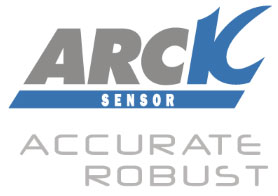Spread that market share – April 2004
Press release in WORLD PORT DEVELOPMENT – April 2004
SPREAD THAT MARKET SHARE (PDF)
New technology
[…] With the increased use of high-tech spreaders comes extra urgency on the need for companies to develop new systems. French company, Arck Electronique, has recently launched its new spreader positioning system SP16 and SP13. The SP16 sensor is dedicated to container detection under the spreader on harbour cranes. Its purpose is to help the crane driver adjust the hoist position in order to pick-up the container, thus overcoming the problem incurred when adjusting the position of the spreader if it is swaying, and saving time. It can also be used on unmanned cranes, where the spreader should be automatically positioned to pick up the container. The sensor analyses the spreader position above the container, and provides some indication to the crane PLC in which direction to move to get the right position, and will also confirm if the position is correct. SP16 is an optical sensor, which uses three or six infrared detectors, depending on the type. These detectors look downwards and measure the position of the edge of the container in regards to an optical centre. The optical view angle is +/- 8. This allows a square optical detection area of +/- 250mm on each side, at a distance of 1600mm. This also allows a 100mm gap between two rows of containers. The sensor will be placed at a certain height along the spreader sides (typically 150mm far from the spreader lower surface) to guarantee a +/-50mm square when the spreader arrives at the point 200mm from the container. Arck offers two solutions by using six or three sensors. On the six-sensor system, two sets are placed along the seaside of the spreader, two others along the landside, one on the left side and one of the right-side. This is a complete solution, and is useful when the containers are not all of the same type. The use of two symmetrical sensors makes “differential detection” possible, with the central computer distinguishing between each position. Therefore, if the container width is smaller than the standard container, the set of two sensors will always give the container position. When the container is at the exact position under the spreader all six detectors have a “0” state. Each state is 0 when the container position is centered with a tolerance which could be factory defined (typical +/-15 mm at 200 mm distance)
If the spreader is moving , some sensors will have a state “+1”.
A central computer dedicated to the system analyses the state of every sensors and calculating the state of the spreader as follows :
– no container detection
– bad detection
– spreader centered on container
– right side of spreader to go landside ( SpRi -> LS)
– right side of spreader to go waterside ( SpRi -> WS)
– spreader to go left side (SP -> L)
– spreader to go right side( SP->R)
– left side of spreader to go landside ( SpLf -> LS)
– left side of spreader to go waterside ( SpLf -> WS)
If many movements are necessary, information on these movements will be activated at the same time.
When one side of the spreader should move alone, only one of the SpRi or SpLf is activated to move spreader for position adjustment.
If two sides of spreader need to move in the same direction, both outputs are activated and this should be interpretated as a trolley movement.
As option it is possible to deliver distance information giving the gap between the container and the spreader.
This information is obtained from a sensor which measures the distance to the container with a laser beam.
This sensor has the same type of robustness as the angle detectors: waterproof and able to work with the vibration and shocks of the spreader.
The SP16 sensor is delivered with 6 detector boxes in stainless steel, for higher protection against shocks, vibration, rain and corrosion.
An additional box is the central calculation unit. It receives the information from the 6 detectors and allows the connection to the 24volt DC power supply and the 9 relays outputs.
The 6 detectors are installed on the spreader. The central box is installed on the hoisting system. It is waterproof but should be installed with shocks absorbers. A connection is designed from the spreader to the hoist to allow disconnecting when changing the spreader. This will be analysed case by case with the spreader manufacturer.
Installation of each detector should make in accordance with ARCK to assume the following rules:
– detectors installed are in perfect vertical orientation (looking down)
– detectors installed on the spreader at the six positions defined in drawing N°2
– detectors positioned inside the external part of the spreader with a protecting sheet steel.
To use three sensors (product SP13), one sensor is placed along the seaside of the spreader, two others along the landside; one on the left side and one on the right side (see drawing no 2). This system is most effective when the containers are all of the same type. The SP13 sensor is delivered with three detector boxes, and one additional box, which is the central calculation unit. It receives the information from the three detectors, and allows the connection of the 24volt power supply and the nine relays outputs. Once again, as option, it is possible to deliver distance information, giving the gap between the container and the spreader. This information is obtained from a sensor, which measures the distance to the container with a laser beam. This sensor is also the same type of robustness as the angle detectors: waterproof and able to work with the vibration and shocks of the spreader. Output is the same as with the six-sensor solution. Information on any sales or orders for the product was not available at the time of going to press, but rest assured that over the years Arck has been proven to come up with new ideas for crane drivers.
[…]




